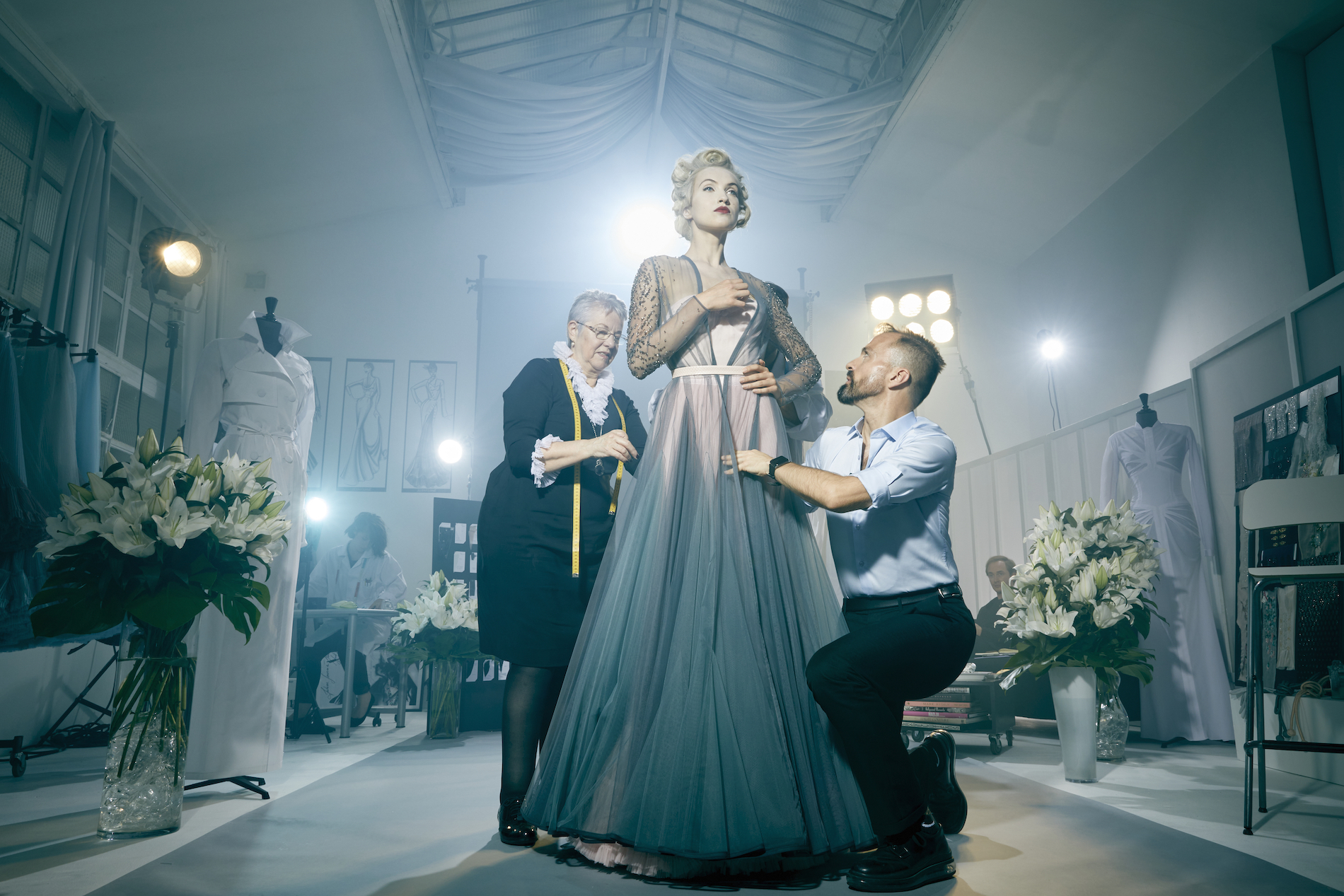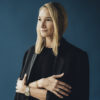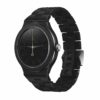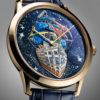Julien Fournié in his workshop
In the absence of fashion shows, the Fédération de la Haute Couture et de la Mode asked its members to create a video that shows their know-how, in complete freedom. The grand couturier Julien Fournié chose to reveal what goes on behind the scenes of the fittings with a client. A film that shows the reality of his profession in a dreamlike and magnified way. Isabelle Cerboneschi
Cliquer pour voir la vidéo
In the video Premier Manifesto, by Julien Fournié, there is unity of time and space. Everything takes place in his Parisian workshop with selected characters: his client, played by his cabin model Michaela Tomanova, Madame Jacqueline, his première d’atelier, his second d’atelier, the assistant, the production assistant, the plumassier (the feather worker) Julien Vermeulen, and the couturier. And they all revolve around the client in order to make her dreams come true. “We decided to make a collection of 30 models but we only show seven. This film is an instruction manual for the customers. It shows how we apprehend haute couture at Julien Fournié”, explains the grand couturier, on the phone.
Haute couture is not a label like any other. It is legally protected and meets the rules laid down in a decree published on January 23rd, 1945. It can only be used by companies that are approved each year by a commission led by the Chambre Syndicale de la Couture and held under the aegis of the Ministry of Industry. Fifteen houses can boast of possessing this label, including Julien Fournié.
In a house like Julien Fournié, haute couture is a ballet, a story woven between the couturier and his client. It all starts with a sketch, a desire, the taking of measurements, for new clients, then the first fitting of the model made in a white canvas. The dressmaker checks, makes the alterations so that the garment is cut like a second skin, while leaving space for life’s movements. Then there is the choice of fabric. At Julien Fournié, no superfluous stock, no burnt or destroyed materials: orders are placed to the nearest meter and everything is being used. The planet is worth it. Once the model has been made, there is the second fitting, and the dress is yours. “We create above all for the customers”, says Julien Fournié.
The film begins with a voice-over, that of Jean-Paul Cauvin, who poses an intention: “All we can decide is how we can act in the time that is given to us.” “This is to show that we must take our time with haute couture: these are values anchored in time, says Julien Fournié. We can no longer make people believe, as some industrial platforms do, that you can make high-flying luxury very quickly.”
The film revolves around a few words: freedom, disruption. You can see how much the team is involved : just pay attention to the worried looks of Madame Jacqueline during each fitting. She gauges. She is able to take your measurements with her eyes only. “Alone we can do nothing,” explains Julien Fournié. If there isn’t a team working at the rhythm of the designer and the customer, it doesn’t work. With this obsession: to bring the client to magnificence. »
“There’s nothing more eco-responsible than a haute couture approach”, emphasizes Julien Fournié, “because we only produce what is ordered. And since everything is made in Paris, there is no carbon tax.”
Her loyal customers loved the idea of not having a fashion show “They are delighted because of the dresses: they will be the first to discover all the models of the collection. Haute couture is exclusive. But the hodgepodge of influencers, who get paid for wearing clothes, has tarnished the image of French luxury.”, says Julien Fournié.
Is video the future of the show? “For now it’s an interesting new medium. It allows us to go further, to show the material and the secrets of fabrication, while on the catwalk it’s a matter of sharing an emotion that is born from movement. The emotion of an audience is part of the show and it will be complicated not to continue with the catwalks. On the other hand, we will continue to do private presentations, because a film will never replace a falling fabric. »
























